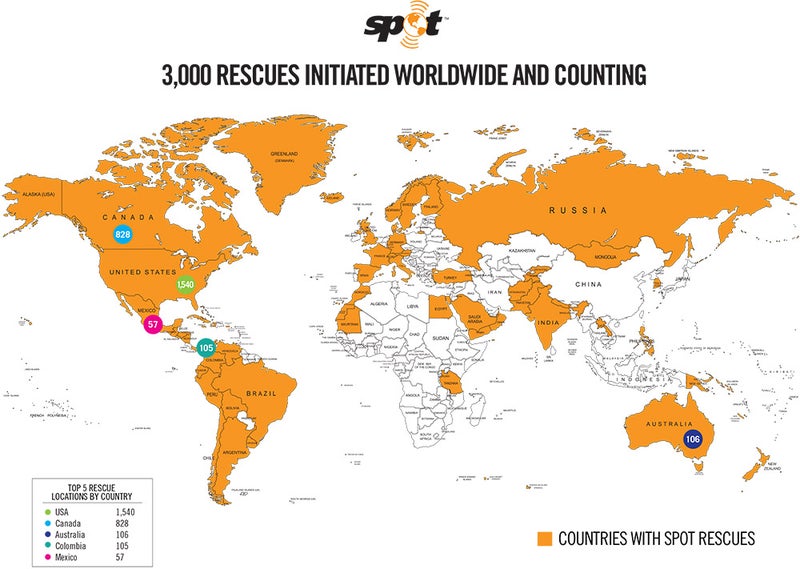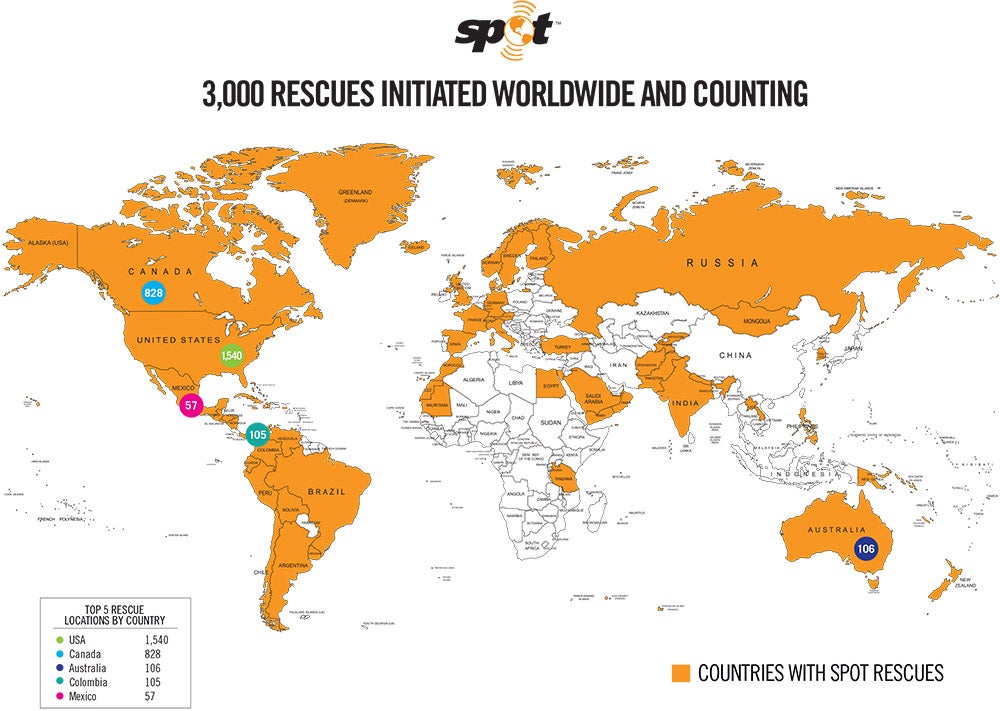In early May, Kevin Boniface was riding his new motorcycle in the Colorado Front Range, along an open off-road area not far from the site of infamous . The ride was going great—until a friend, Tom, who was also riding that day, leaned too sharply, caught his handlebar, and went down.
When Boniface reached Tom, his friend was drooling and concussed, and possibly had broken ribs. “We had the same conversation over and over,” Boniface recalls. “‘How did I get here?’ What happened?’” They were 40 minutes from the nearest paved road, and had no cell-phone service. The injuries appeared quite serious.
Three years earlier, Boniface had invested in a SPOT tracker to have on hand during emergencies. Boniface had only ever used before the accident, a preset sending his wife his location at the click of a button. As Tom writhed in pain, Boniface decided now was the time to test his SPOT’s SOS beacon.
“(My SPOT tracker) was really helpful because I probably could have ridden to go get help, but it saved a lot of time,” Boniface says. About 35 minutes later, a sheriff was on site and Tom was in an ambulance.
Boniface didn’t realize at the time that he would be part of a company milestone: the rescue was the 3,000th that utilized ‘s GPS technology.
, the sat phone company which owns Spot, launched their tracker in 2007, and usage of the devices has been climbing ever since. SPOT products can be programmed to send GPS coordinates via stationary low-earth satellites to emergency responders— at . Most satellite phones , not counting service fees.

Search and rescue teams traditionally depend on mobile networks, sometimes radio networks, to locate lost adventurers. But according to Globalstar CEO Jay Monroe, 75 percent of the planet’s land surface is out of network; you’d be hard-pressed to find a cluster of cellphone towers in Aniakchak National Monument, for instance. Satellite phones and trackers transcend this problem. SPOT’s trackers, called SPOT Gen3, and SPOT Global Phones can access low-earth satellites from anywhere in the world.
“Wherever it is in whichever country, the capability of the unit is such that it really takes the search out of search and rescue,” says Monroe. “You know exactly where the person is and all you have to do is go get ‘em.”
When someone presses an SOS beacon, a signal with his or her coordinates goes out to an international dispatch center manned by emergency response company . GEOS alerts the relevant protective body—here, the sheriff—but also the emergency contact of whoever owns the SPOT, to double-check the owner’s last known coordinates.
“The truth is, about one time a day, we get an emergency rescue and often times it’s life or death,” says Monroe. “If it wasn’t out there—there would be some number of people in my backyard of Colorado who wouldn’t be at this year’s Fourth of July barbeque.”
In Boniface’s case, a county dispatch reporting error sent his wife in a panic to the hospital.
“After the sheriff showed up, I figured I should probably make sure she knew I was okay, so I pressed the okay button,” Boniface says. “She and Tom’s wife saw each other in the emergency room and started putting stuff together.”
Tom, had sustained four fractures to his collarbone, and broke seven ribs, but was expected to make a full recovery.
“He’s definitely gonna buy a SPOT,” Boniface says.


